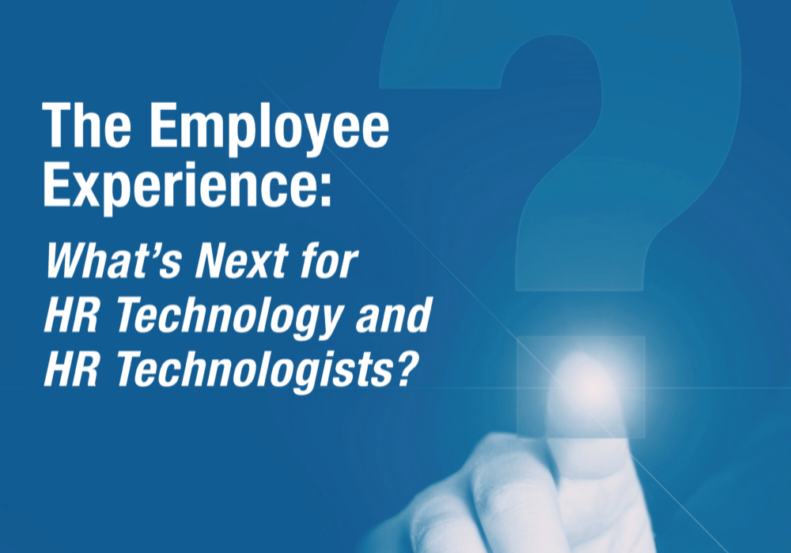As I wrote in my most recent report, the HR technology market has seen tremendous disruption in the last year or so. That disruption is sure to continue, as evidenced by several announcements from major technology vendors in just the past few weeks and months.
These announcements will have significant market impact on vendors’ product strategies and will likely influence the purchase plans of some buyers. In this article, I’ll recap my early analysis of two major announcements.
Microsoft Viva
In Q3 2020, Microsoft reported 258 million active business users of Microsoft 365 and approximately 78 million active daily users of Teams. Around the world, 1.2 billion people use Microsoft Office.
Microsoft’s business impact goes much further. The company now owns LinkedIn , LinkedIn Learning (one of the largest libraries of business learning), Glint (engagement and survey platform), Microsoft Learn (a large library of Microsoft developer content), GitHub (used by 56 million software developers) and a series of HR applications under the Dynamics brand that thousands of mid-sized companies use for employee administration.
In a move to capitalize on its significant IT footprint in most organizations and to take advantage of market fragmentation, Microsoft announced Microsoft Viva in early February; the offering is expected to be widely available later this year. Built on Microsoft 365 and delivered in Teams, Viva incorporates four applications:
- Viva Connections is essentially a system that brings together SharePoint and other portal applications to provide a single destination for employee information sharing and communications. Given that it’s a mobile app, it could become your company’s mobile employee interface to all sorts of applications.
- Connections could become an integration point for just about every employee-facing app. Platforms like Workday, SuccessFactors, and Oracle try to do this on their own, but they only give you access to their functionality. The Microsoft Viva Connections app will connect to anything.
- Viva Learning is a learning portal and learning administration platform for any form of content – built right into Microsoft Teams. And it’s also a discovery platform which lets employees find recommended content throughout the network. Employees will be able to find and see recommended learning while they’re collaborating with others in Teams for group discussions.
- Viva Insights is an out-of-the-box wellbeing application, productivity analysis tool, and a workplace analytics platform. If you’ve used Microsoft Workplace Analytics (you may see it as recommendations from Cortana), you know that Microsoft Office is already working behind the scenes to make work life better and more organized. This toolset looks at your calendar to recommend focus time, it gives you (and managers) insights on your productivity, and it recommends ways to stay healthy. And under the covers, it does organizational network Analysis to look at patterns of collaboration, management behavior, and more.
- Viva Insights is also Microsoft’s integration point for Headspace and hundreds of other employee wellbeing applications in the market. So, this is both a place to analyze what’s happening at work, provide managers insights into team performance, and just make work life better. Privacy and security controls ensure that personal information is visible only to the employee. Insights for managers and leaders are generated from aggregated and anonymized data by default to help maintain personal privacy.
- Viva Topics is designed to help find relevant information, locate experts, and organize compliance and documentation at enterprise scale.
Most companies currently have dozens of content management and index systems – located in sales, manufacturing, finance, HR, and other functional areas. Viva Topics has the potential to bring this all together and encourage vendors to align around Microsoft technology.
Oracle Journeys
Last month, Oracle introduced Oracle Journeys, a workflow-enabling system that is part of Oracle Cloud HCM. First, it’s important to note that Oracle Cloud HCM is an end-to-end human capital application and includes tools for recruiting, onboarding, talent management, learning, talent marketplace, compensation, time and labor, payroll, and HR help desks. The platform also includes employee social networking, wellbeing, benefits, and contract work management.
Oracle Journeys is designed to help companies manage and deliver personalized experiences for employees throughout their work lives. There are three types of journeys available: work-related (e.g., returning to work, setting up a home office), career-related (e.g., celebrating an anniversary, moving to a new position), and personal (e.g., getting married, finding elder care). Journeys gives users the ability to design a new journey or edit and copy an existing one. You can also integrate non-Oracle applications such as those for background checking and facilities management and include routing and process automation in the platform. All of this is tightly integrated into Oracle Cloud HCM.
Oracle Journeys is comprised of several components:
- With Journeys LaunchPad, employees can see all their journeys in one place and discover new ones through a search bar. They can dive into a journey of interest by clicking on it, which will start their progress, or bookmark it for later.
- Journeys appear in a number of ways. Managers or HR can share journeys or assign them to employees. For example, a manager might assign a journey to become a mentor to an employee with strong leadership potential, or a reward-focused journey to recognize outstanding performance. Journeys can also be triggered by certain events, such as a travels journey based on an expense report for an upcoming flight. A personal development journey may be recommended based on recent consumption of certain learning content.
- Oracle does not rely on employees to discover them on their own. When submitted to a digital assistant, a question such as “Where can I find a mentor?” can prompt a recommendation to take a career development journey that brings an employee directly to relevant resources. Alerts via email and in the employee portal also notify individuals when a journey is assigned or recommended.
- Journey Creator lets managers and HR design tailored experiences. You can design or clone a journey, add or reorder steps, establish dependencies, and publish all without the help of IT.
- Journeys can include videos, links, verifications (such as the completion of a COVID test or vaccination), and inline surveys. Journeys can also connect to third-party applications using packaged integrations or APIs.
- Oracle Journeys can use HCM data to personalize or trigger journeys based on role, location, position, and other data. For example, an employee in one location may see a journey with specific information relevant to that country or department; another employee would see a different journey based on other departmental policies.
- To make them easy to build, there are out-of-the-box journeys available immediately. These templates can be edited and replicated. Oracle plans to include pre-built journeys that span HCM, finance, customer experience, and procurement.
- To integrate other applications and use process automation, Oracle is also introducing Journey Booster, which lets users bring in applications that extend beyond the Oracle Fusion Cloud system, making it truly supportive of multi-backend experiences. For example, a back-to-workplace journey could integrate with a badge reader system.
Conclusion
There is more market disruption to come. Recent announcements from LinkedIn, ServiceNow, and Degreed show that vendors are innovating at lightning speed.
Certainly, there are other EX-related options to consider, depending on a company’s goals and technology infrastructure. For instance, Embark, offered by WillisTowersWatson is an impressive new system that delivers a globalized end-to-end employee portal out of the box with content, configuration capabilities, and many third-party integrations.
Workday People Experience, SuccessFactors HXM, and SAP Work Zone are options for their respective customer constituencies. Larger, more complex companies will want to look at ServiceNow as a process, workflow, and journey platform that crosses multiple back-end systems.
To learn more and keep up to date, check out my ongoing analysis on EX and other HR trends at www.joshbersin.com. For an in-depth look at the comprehensive technology market, download a complimentary copy of HR Technology 2021: A Definitive Guide.



